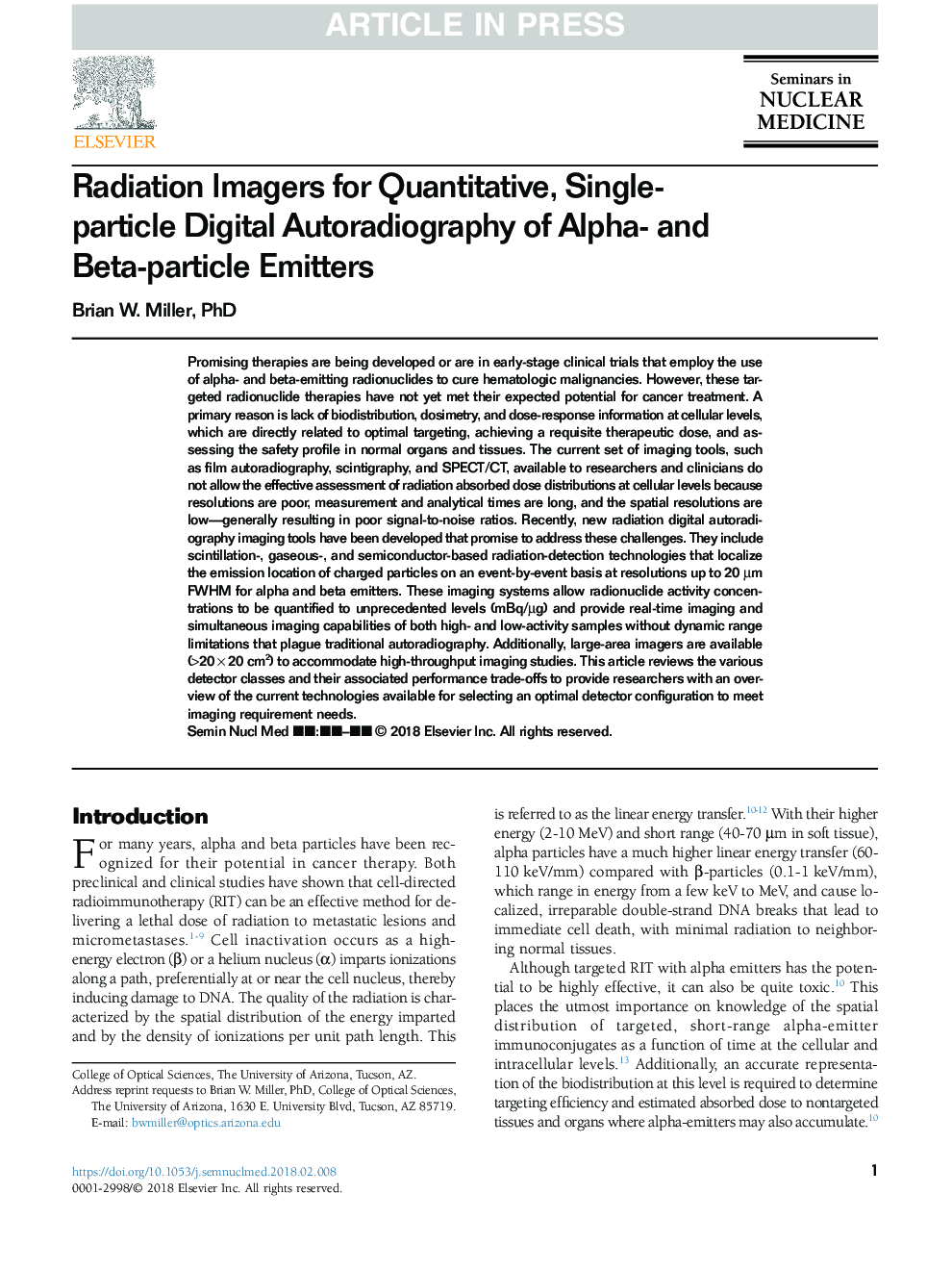| کد مقاله | کد نشریه | سال انتشار | مقاله انگلیسی | نسخه تمام متن |
|---|---|---|---|---|
| 8826164 | 1610598 | 2018 | 10 صفحه PDF | دانلود رایگان |
عنوان انگلیسی مقاله ISI
Radiation Imagers for Quantitative, Single-particle Digital Autoradiography of Alpha- and Beta-particle Emitters
ترجمه فارسی عنوان
اشعه ایکس برای اختراع دیجیتال کمی با یک ذره آلترا و ذرات بتا ذرات
دانلود مقاله + سفارش ترجمه
دانلود مقاله ISI انگلیسی
رایگان برای ایرانیان
موضوعات مرتبط
علوم پزشکی و سلامت
پزشکی و دندانپزشکی
رادیولوژی و تصویربرداری
چکیده انگلیسی
Promising therapies are being developed or are in early-stage clinical trials that employ the use of alpha- and beta-emitting radionuclides to cure hematologic malignancies. However, these targeted radionuclide therapies have not yet met their expected potential for cancer treatment. A primary reason is lack of biodistribution, dosimetry, and dose-response information at cellular levels, which are directly related to optimal targeting, achieving a requisite therapeutic dose, and assessing the safety profile in normal organs and tissues. The current set of imaging tools, such as film autoradiography, scintigraphy, and SPECT/CT, available to researchers and clinicians do not allow the effective assessment of radiation absorbed dose distributions at cellular levels because resolutions are poor, measurement and analytical times are long, and the spatial resolutions are low-generally resulting in poor signal-to-noise ratios. Recently, new radiation digital autoradiography imaging tools have been developed that promise to address these challenges. They include scintillation-, gaseous-, and semiconductor-based radiation-detection technologies that localize the emission location of charged particles on an event-by-event basis at resolutions up to 20âµm FWHM for alpha and beta emitters. These imaging systems allow radionuclide activity concentrations to be quantified to unprecedented levels (mBq/µg) and provide real-time imaging and simultaneous imaging capabilities of both high- and low-activity samples without dynamic range limitations that plague traditional autoradiography. Additionally, large-area imagers are available (>20âÃâ20âcm2) to accommodate high-throughput imaging studies. This article reviews the various detector classes and their associated performance trade-offs to provide researchers with an overview of the current technologies available for selecting an optimal detector configuration to meet imaging requirement needs.
ناشر
Database: Elsevier - ScienceDirect (ساینس دایرکت)
Journal: Seminars in Nuclear Medicine - Volume 48, Issue 4, July 2018, Pages 367-376
Journal: Seminars in Nuclear Medicine - Volume 48, Issue 4, July 2018, Pages 367-376
نویسندگان
Brian W. PhD,
